Key takeaways
- Montessori methods emphasize respecting each child’s individuality, fostering natural collaboration through self-directed learning and a prepared environment.
- Collaboration in Montessori settings promotes empathy, confidence, and essential social skills as children engage in meaningful interactions and problem-solving.
- Creating a collaborative environment involves thoughtful preparation, including mixed-age groupings and encouraging peer discussions to enhance student interaction.
- Measuring success in collaboration focuses on observing children’s engagement, problem-solving abilities, and reflections on their experiences rather than traditional assessments.
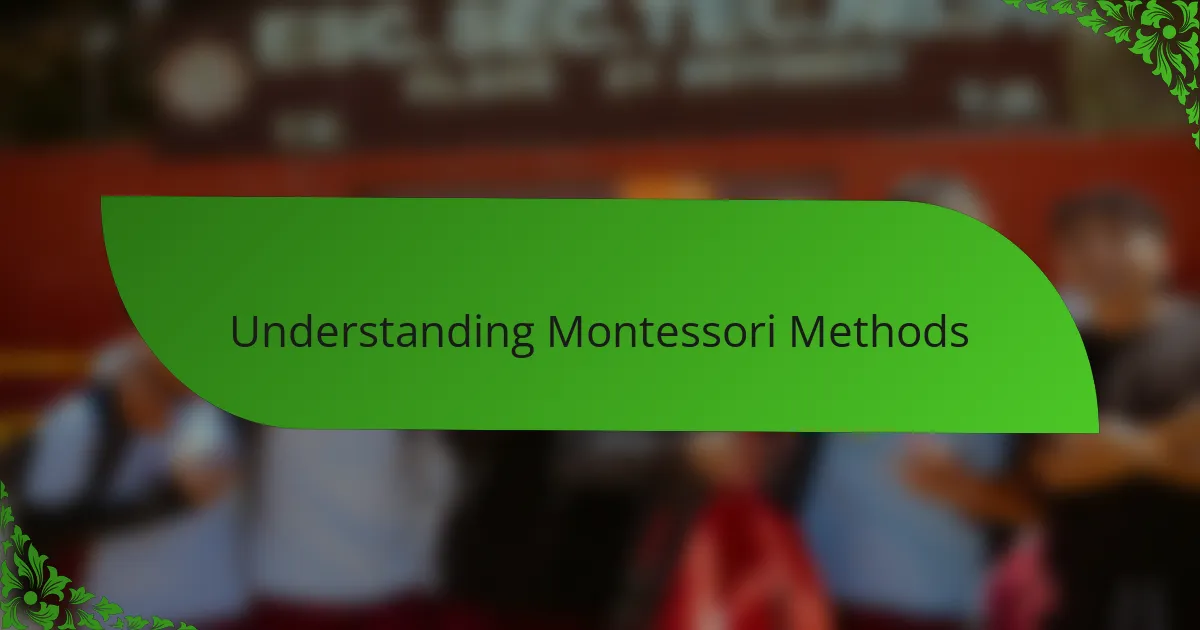
Understanding Montessori Methods
Montessori methods center on respecting each child as a unique learner, which I find really transforms how collaboration naturally unfolds. When I first observed a Montessori classroom, I noticed how children were given the freedom to choose activities that sparked their genuine interest, leading to more authentic and willing interactions. Isn’t it fascinating how autonomy can encourage cooperation without any forced group work?
One thing I’ve come to appreciate deeply is the prepared environment in Montessori settings. It’s thoughtfully arranged to invite exploration and shared discovery, which seems to cultivate a subtle but powerful sense of community. From my experience, when kids feel safe and equipped with the right tools, they’re more inclined to work alongside their peers with curiosity and respect.
How often do we think about collaboration as something that just happens, rather than something nurtured? Montessori methods emphasize hands-on, self-directed learning, which, to me, is the heart of genuine teamwork. Watching children navigate challenges side by side, guided but not controlled, has reshaped how I view effective collaboration beyond traditional classroom setups.
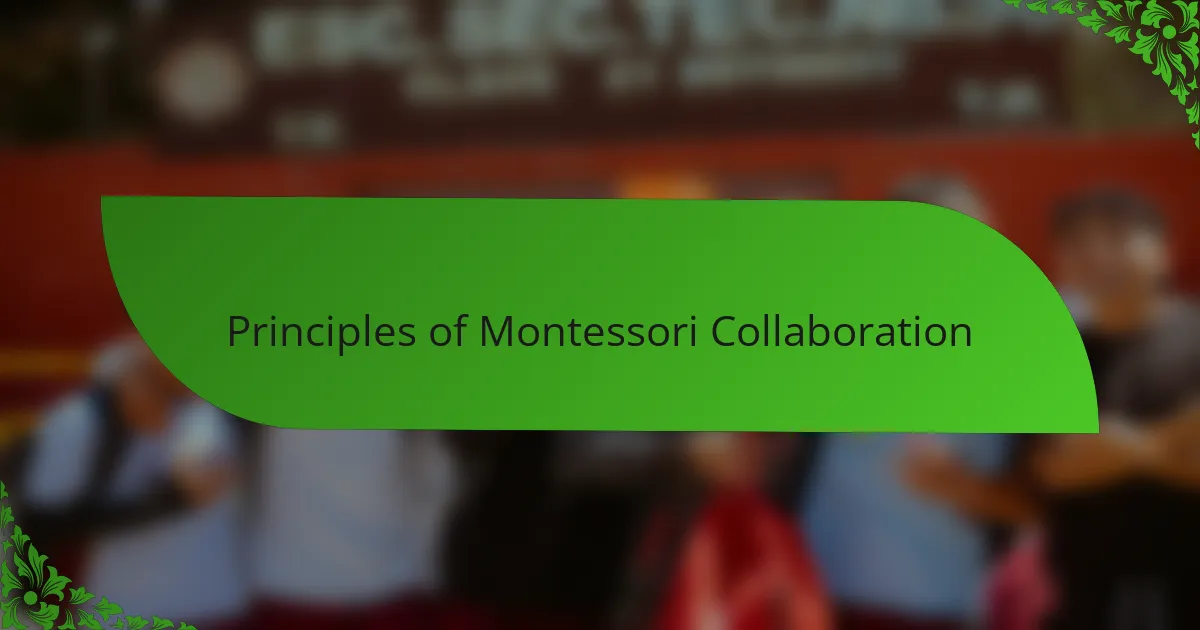
Principles of Montessori Collaboration
What strikes me most about Montessori collaboration is its foundation in respect—respect for each child’s pace, choices, and contributions. I recall a moment when a shy child took the lead in a group project, simply because the environment honored her initiative rather than pushing her into the spotlight. Doesn’t that shift how we usually think about teamwork?
Another key principle I’ve observed is that collaboration in Montessori settings flows naturally from individual responsibility. When children take ownership of their learning materials and tasks, they become eager partners rather than reluctant participants. From my experience, this sense of accountability creates a quiet but powerful bond among peers.
Isn’t it interesting how silence and concentration can coexist with collaboration? I’ve noticed that Montessori encourages deep focus alongside gentle sharing, where children communicate through gestures, eye contact, or soft words. This subtle dance fosters a kind of teamwork that feels both peaceful and purposeful, something I rarely see in traditional group work.
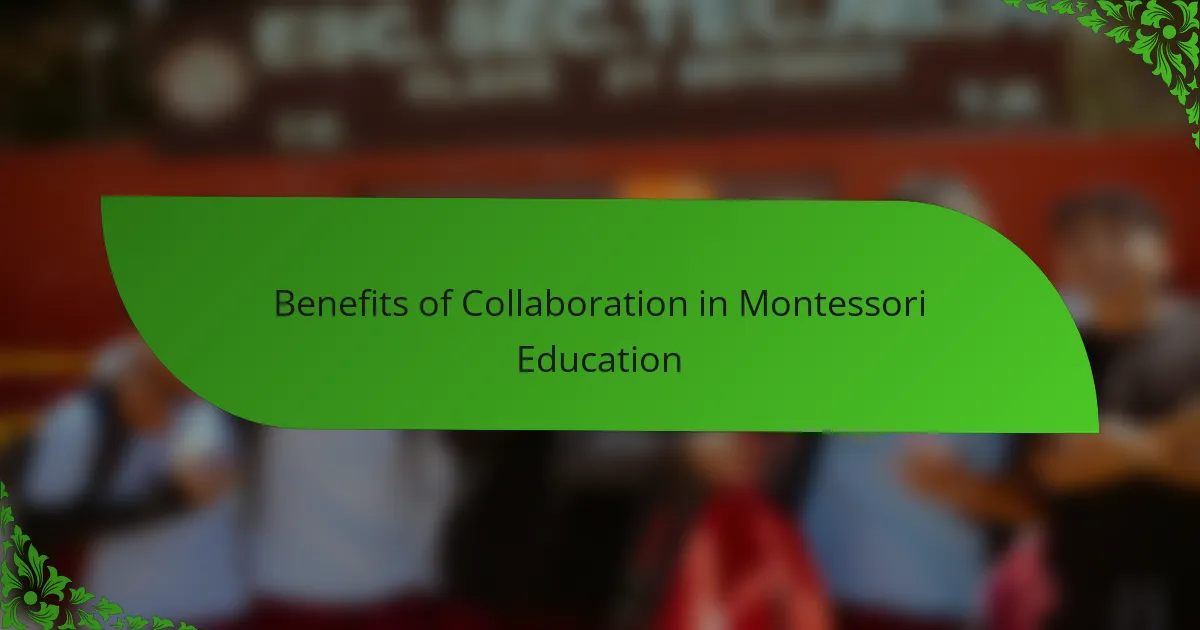
Benefits of Collaboration in Montessori Education
Collaboration in Montessori education brings so many unexpected benefits that I find truly inspiring. For instance, when children work together, I see them develop empathy naturally—because they’re not just sharing tasks, they’re tuning into each other’s thoughts and feelings. Have you ever watched kids so absorbed in a shared goal that their differences seem to vanish? That’s the magic of this approach.
From my own experiences, collaboration here also sparks a deeper sense of confidence. I remember a timid child slowly opening up when paired with a patient peer, discovering strength in teamwork that felt far more genuine than any forced group exercise. Isn’t it remarkable how cooperation can nurture self-esteem without any pressure?
What really stands out to me is how collaboration nourishes lifelong social skills. Children learn to negotiate, listen, and support at their own pace, often without realizing they’re practicing crucial life habits. Don’t you think this kind of organic growth makes all the difference in preparing kids not just academically, but as thoughtful, compassionate individuals?
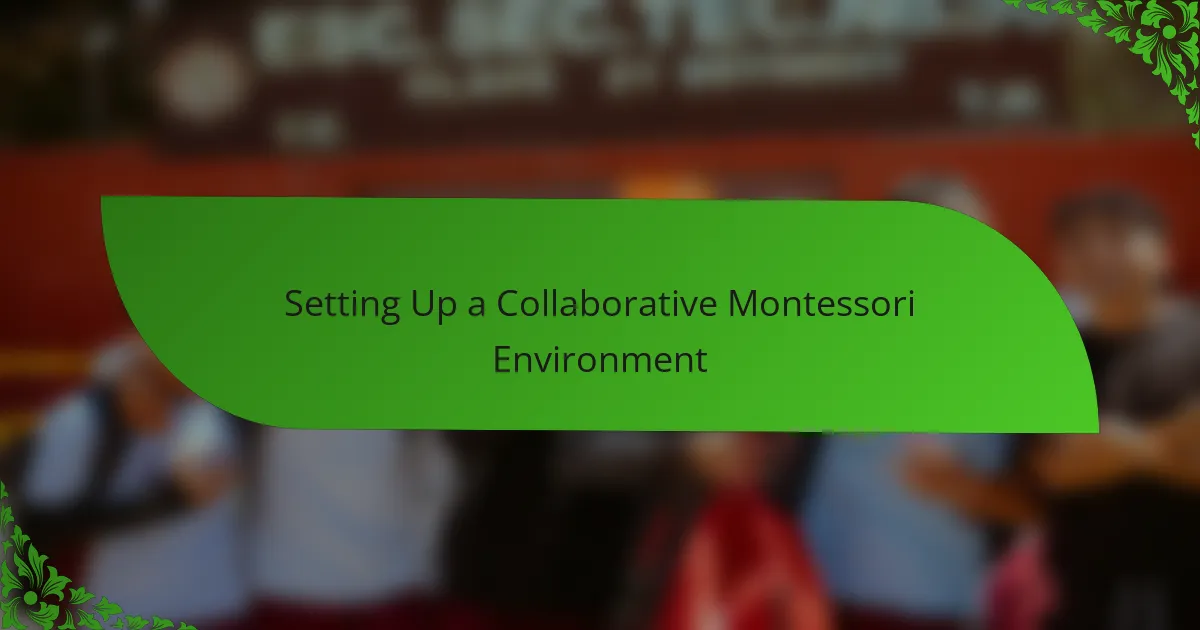
Setting Up a Collaborative Montessori Environment
Creating a collaborative Montessori environment starts with thoughtful preparation. I’ve seen how arranging materials within easy reach invites children to explore together, sparking spontaneous conversations and teamwork. Have you ever noticed how a well-organized space can quietly encourage kids to gather around a shared project without any prompting?
Lighting, furniture, and even the décor play subtle roles in setting the mood for collaboration. When I adjusted a classroom corner to be cozier and more inviting, children naturally gravitated there for joint activities, exchanging ideas with ease. Isn’t it amazing how the physical setup can shape social dynamics almost effortlessly?
Another important piece is establishing clear expectations that respect each child’s individuality while encouraging cooperative behavior. I recall gently guiding a group where some children preferred to work alone at first, but over time, the supportive atmosphere helped them open up to collaboration on their own terms. Doesn’t that highlight the delicate balance Montessori environments achieve between independence and togetherness?
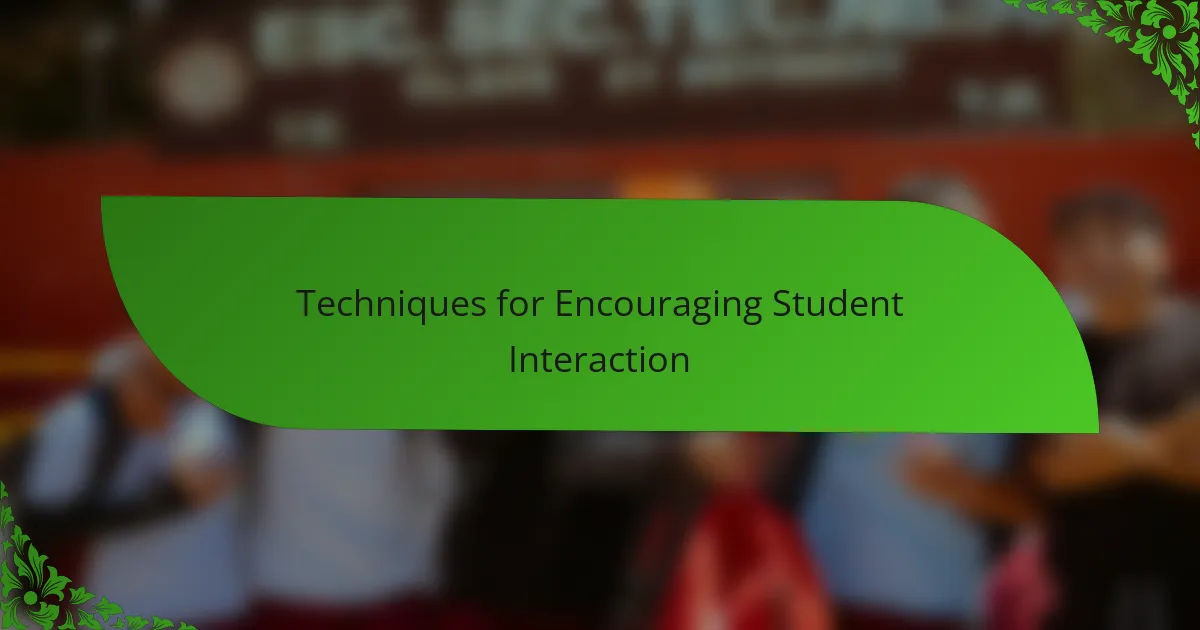
Techniques for Encouraging Student Interaction
One technique I rely on to foster student interaction is the use of mixed-age groupings. I’ve noticed that when older children collaborate with younger ones, the mentorship naturally blossoms—it’s like watching confidence and empathy grow in real time. Doesn’t it amaze you how this setup encourages children to communicate more thoughtfully, sharing knowledge without any formal instruction?
I also make it a point to introduce collaborative materials designed for hands-on sharing, such as puzzles or building sets that can’t be completed alone. When I see kids negotiating roles and ideas around these activities, it reminds me how tangible tasks can spark meaningful conversations without any [censured] interference. Have you ever witnessed the way problem-solving together deepens their engagement effortlessly?
Another approach I find effective is encouraging peer discussions through gentle prompts rather than direct instructions. For example, I might ask, “What do you think your friend’s idea means?” or “How could you build on that thought?” These moments often lead to spontaneous, respectful exchanges where children listen deeply and respond with kindness. Isn’t it fascinating how a simple question can open the door to richer collaboration?
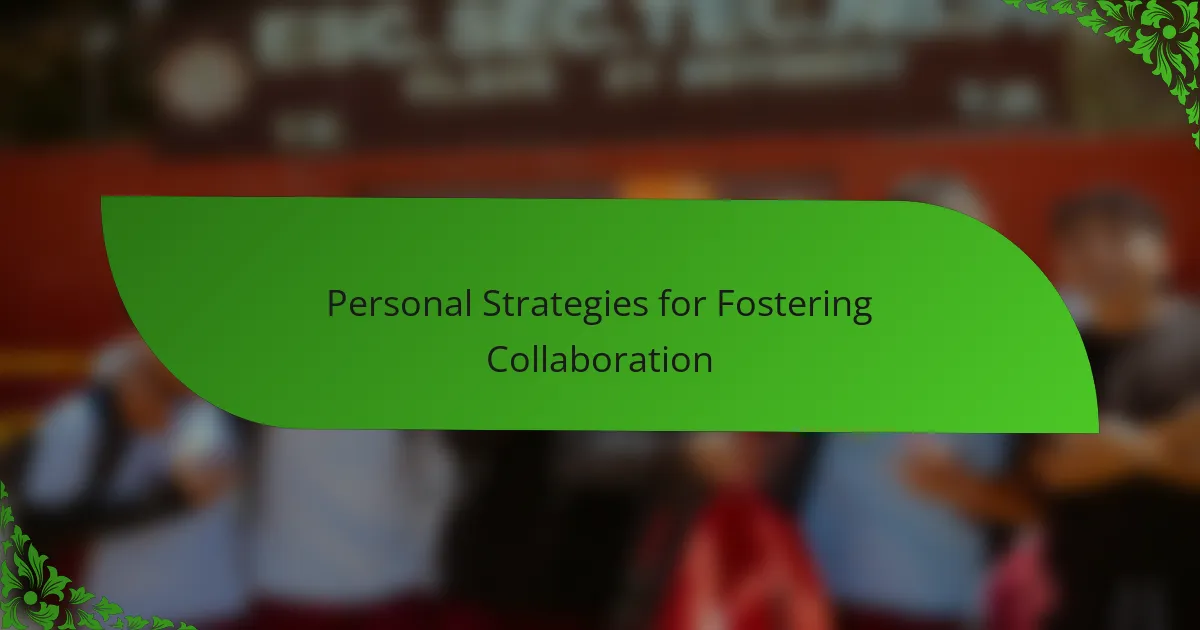
Personal Strategies for Fostering Collaboration
One personal strategy I’ve found invaluable is modeling collaboration through my own behavior. When I consciously show respect, patience, and openness in interactions, children seem to mirror those qualities naturally. Have you ever noticed how your own attitude can quietly set the tone for the whole group?
I also like to create small moments for joint decision-making, even in simple tasks like choosing materials or deciding on project steps. Giving children a voice in these choices seems to empower them and encourages shared responsibility. From my experience, this helps build a cooperative spirit without any sense of coercion.
Sometimes, I step back intentionally and let the children navigate group dynamics on their own, intervening only when necessary. It takes trust, but I’ve seen how this freedom fosters problem-solving skills and mutual respect in ways that guided instructions simply can’t. Isn’t it rewarding to watch children grow confident in handling collaboration all by themselves?
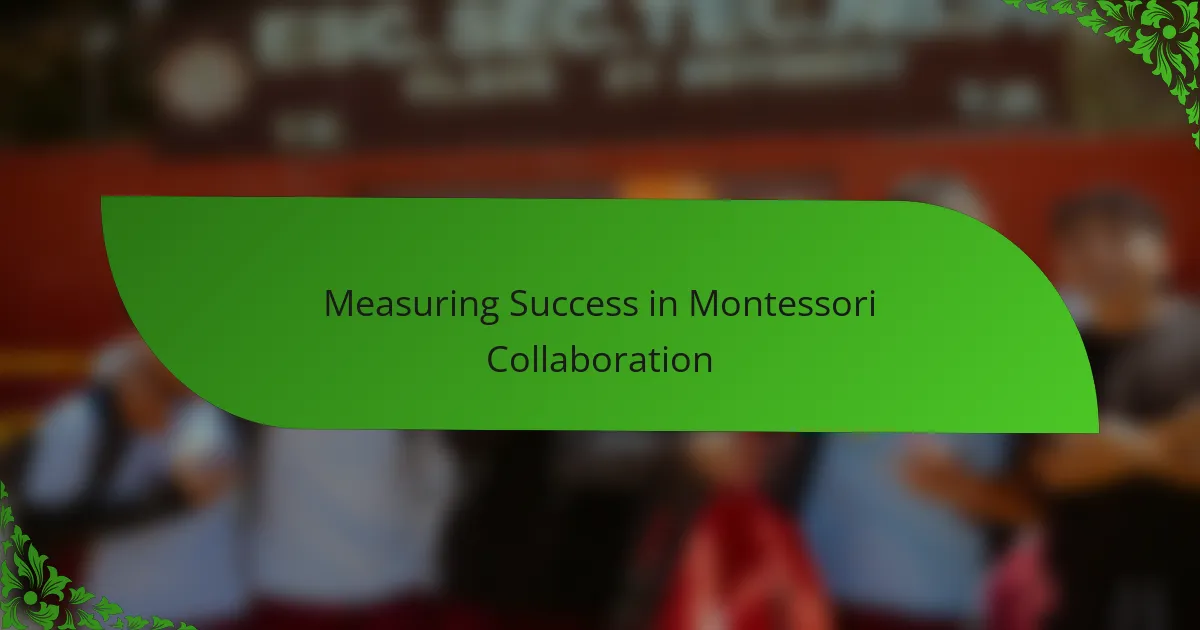
Measuring Success in Montessori Collaboration
Measuring success in Montessori collaboration isn’t about ticking boxes or test scores; it’s more about observing subtle shifts in how children engage with one another. I remember once watching a group quietly resolve a disagreement over shared materials without any [censured] guidance—it was a small moment, but to me, it screamed success in fostering true teamwork. Doesn’t that kind of organic resolution tell us more than any formal assessment could?
I’ve found that success often reveals itself in children’s growing comfort and willingness to participate together over time. When a previously withdrawn child starts initiating cooperative play or sharing ideas, it feels like a breakthrough, a living proof that the collaborative environment is working. How often do we pause to notice these soft signs of progress that don’t always fit neatly into traditional evaluation methods?
From my experience, another effective way to gauge collaboration is through children’s reflections—simple conversations where they express what they liked or struggled with in group activities. Hearing their perspectives gives valuable insight into how well they understand cooperation and empathy. Have you tried asking kids what teamwork feels like to them? Their answers often surprise and inspire me.